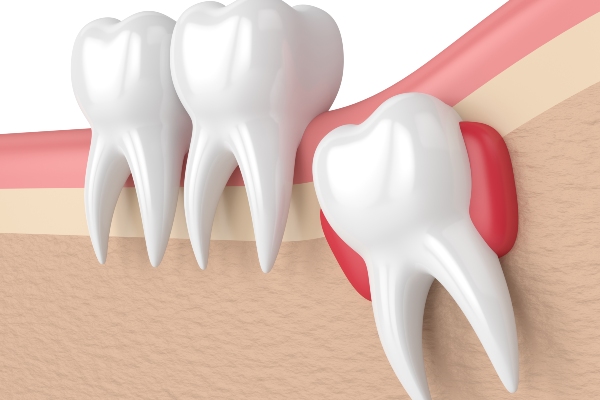Dental Bonding: A Minimally Invasive Cosmetic Treatment

For problems like tooth chips, stains, or gaps between two front teeth, dental bonding is often the preferred option. Dental bonding can also be used to repair cracked teeth or teeth with jagged edges. It is a simple and painless way to enhance the look of your teeth and your smile. Continue reading to learn more about how dentists improve their patients' smiles with dental bonding.
How dental bonding works
Many dentists believe in using minimally invasive procedures to help patients get their desired smiles. Dental bonding aims to protect as much of the natural teeth structure as possible while providing stunning outcomes and a smile to love. The dentist might recommend the procedure when there is an issue like cracked, chipped, or decayed teeth, stained or discolored teeth, minor gaps between teeth, oddly shaped teeth, and low bite pressure.
Dental bonding is a quick and minimally invasive procedure. The dentist will mold tooth-colored composite resin to mask or patch the troubling spot on the teeth. The material adheres to the surface of the teeth like glue and can be shaded to complement the teeth perfectly. A strong ultraviolet light is sometimes used to "cure" or harden the composite.
The procedure
During an appointment with the dentist, patients will undergo an evaluation to check if there is underlying tooth decay or if the issue is simply aesthetic. The dental professional will do their best to highlight all the options available for smile improvement, then explain how composite bonding can cover the affected tooth to improve its appearance. Patients will also learn more about dental bonding's advantages, how it works, and how it is applied. Alternative care options, such as porcelain veneers or crowns, can be suggested if bonding will not be effective.
Dental bonding entails the use of composite resin to replace a specific portion of a tooth. The remainder of the tooth is unaffected. The resin color will be chosen to complement the tooth color as closely as possible. The tooth's enamel will be roughened, which means a small amount of enamel is lost in the process. After that, a solid adhesive is used to keep the resin in place. The resin can be molded to cover holes or openings in the tooth and alter its contours.
Unless patients have multiple teeth that require restoration, dental bonding should be completed in a single dental appointment. It normally takes between one and two hours to complete the operation. It may take a few days for patients to adjust to their new teeth if they are getting them lengthened. At the initial consultation appointment, the dentist can recommend bonding or some other restorative treatment.
FAQs
The following are frequently asked questions about dental bonding:
Does dental bonding hurt?
It is rare for patients to report discomfort during dental bonding since the dentist does not have to go near the tooth's sensitive pulp. Dental bonding may be performed without the use of anesthetics in most cases. Dental bonding might cause temporary sensitivity in certain patients. Pain relievers should help with this pain.
What happens after dental bonding?
Proper oral hygiene is important to maintain a healthy and beautiful smile after dental bonding. Use a soft toothbrush and fluoride toothpaste at least twice daily, and floss at least once daily to keep your teeth and gums healthy. Also, be sure to schedule frequent dental checkups and cleanings.
Biting your fingernails, chewing on pencils, or opening things with your teeth may all damage the bonding material. Make an appointment with your dentist if you experience any discomfort while biting down or if you discover any sharp edges on a bonded tooth.
What is the average lifespan of dental bonding?
Different factors affect the longevity of bonding materials, including the number of teeth treated and the patient's dental hygiene routine. Most bonding materials, however, only last around three to ten years before a restoration or replacement procedure is necessary.
Is dental bonding healthy for the teeth?
In most cases, dental bonding does not threaten the health of your teeth and gums. There is no risk involved if your teeth and gums are healthy. However, additional treatments may be necessary if you have severe tooth decay, gum disease, or other concerns impacting your oral health.
Consider bonding
Dental bonding, when skillfully applied and sculpted, will give you a natural-looking, stunning smile makeover. The procedure is ideal for those with one or two minor dental problems such as cracks, chips, or stains. It is common because the dentist can save most of the tooth's natural structure.
Request an appointment here: https://rimfd.com or call Rim Dental at (210) 693-1939 for an appointment in our San Antonio office.
Check out what others are saying about our dental services on Yelp: Dental Bonding in San Antonio, TX.
Related Posts
There are some cases where a stained or chipped tooth can be fixed with dental bonding or contouring. While these issues can be more severe and so require a different solution, something like an uneven edge or unsightly spot can often be treated without more invasive procedures that can affect the entire mouth.This procedure enhances…
Most people think of cosmetic dental care as a type of care that can only improve the appearance of one’s smile rather than the health of the teeth. The truth is, though, that many cosmetic dental procedures actually do both. Take a further look at four of the top cosmetic dentistry treatments that can enhance…
Enhancing the smile is possible with cosmetic dental services. The appearance of teeth that are discolored, misshapen, crowded, broken, chipped, worn or that have gaps can be improved with a smile makeover. When any of these physical conditions exist, it is helpful to understand the procedures available.According to a 2017 survey by the American Academy…
A cosmetic dentist helps enhance the smile's appearance. They may correct cracks, chips, and other cosmetic imperfections in the tooth enamel through options, including tooth contouring or dental veneers. While similar, a patient will only need one of these cosmetic dental procedures. Learning the differences between these two procedures can help determine which treatment meets…


